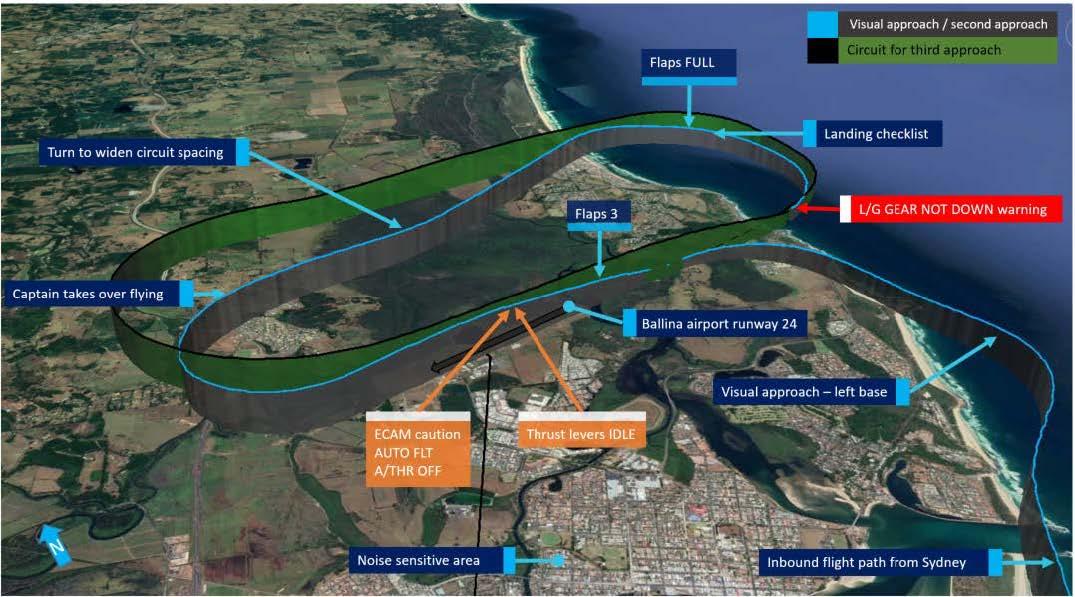
The flight crew of an Airbus A320 received a landing gear not down master warning while on approach to land at Ballina Byron Gateway Airport, New South Wales, due to an incorrect aircraft configuration following a go-around, a new ATSB investigation report details.
During the 18 May 2018 flight from Sydney, the A320 was conducting a visual approach to land on runway 24, with the first officer manually flying the aircraft. Manoeuvring to join the circuit on a left base, the captain recognised that the aircraft’s airspeed and altitude were both higher than a normal approach profile. However, due to circuit traffic, the captain elected to have the aircraft established on final approach before commanding a go-around.
The ATSB established that the flight crew did not follow their operator’s standard procedures during the go-around and subsequent visual circuit at 1,500 ft. In particular, the flaps remained at Flaps 3 rather than Flaps 1 during the circuit. This created a series of distractions leading to a non-standard aircraft configuration for a visual circuit. Limited use of available aircraft automation added to the flight crew’s workload.
Following standard procedures mitigates the risk of the selection of inappropriate auto-flight modes, unexpected developments, or confusion about roles or procedures can contribute to decisions and actions that increase the safety risk to the aircraft and its passengers.
During the downwind leg following the go-around, the flight crew did not select the landing gear down as they had commenced the configuration sequence for landing at the Flaps 3 setting. Furthermore, the flight crew incorrectly actioned the landing checklist, which prevented the incorrect configuration for landing being identified and corrected, the investigation established.
Consequently, on the second approach, at about 700 ft, a master warning was triggered because the landing gear had not been selected down. The flight crew then conducted a second go-around and landed without further incident on their third approach.
“This occurrence highlights the importance of adherence to standard operating procedures and correctly monitoring the aircraft’s approach and parameters to provide assurance a visual approach can be safely completed,” ATSB Director Transport Safety Director Dr Stuart Godley said.
“Following standard procedures mitigates the risk of the selection of inappropriate auto-flight modes, unexpected developments, or confusion about roles or procedures that can contribute to decisions and actions that increase the safety risk to the aircraft and its passengers.
The ATSB report notes that an incorrect aircraft configuration for landing is rarely the result of a single action or identifiable event.
“In this case a number of factors, such as distraction and limited use of aircraft automation, combined to result in the landing gear not being selected to down,” Dr Godley said.
“While highly undesirable, it should be noted that the aircraft’s warning system effectively alerted the flight crew to the problem and the crew responded promptly to the warning and initiated a second go-around.”
Dr Godley said the the incident reinforced how unexpected events during approach and landing phases can substantially increase what is already a high flight crew workload.
Read the report: Incorrect configuration for landing involving Airbus A320, VH-VQK, Ballina/Byron Gateway Airport, New South Wales, on 18 May 2018


